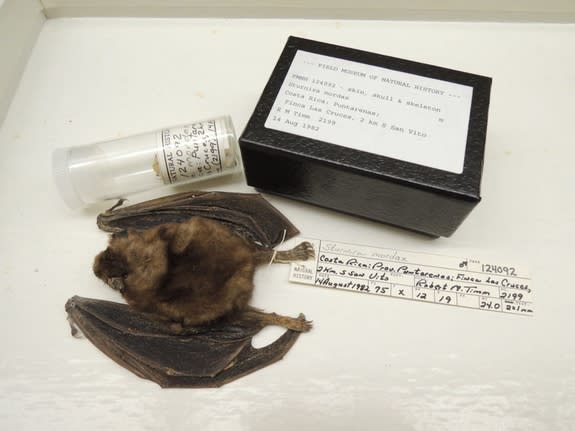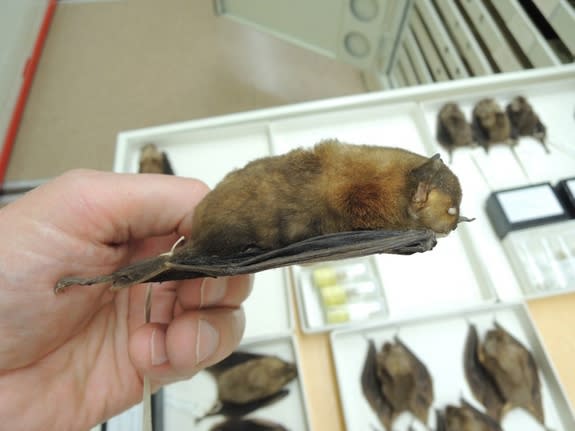New Sweet-Smelling Bat Species Identified
By extracting DNA from museum specimens, scientists have discovered three new species of yellow-shouldered bats.
The fruit-eating bats belong to the Sturnira genus. They can grow to be 0.5 to 3 ounces (14 to 85 grams) in size and live in tropical and montane forests from Mexico to northern Argentina. The creatures get their colloquial name from the males' shoulder glands, or epaulettes, which have a yellowish tint and give off a fragrant scent, said Bruce Patterson, curator of mammals at The Field Museum in Chicago.
"It's vaguely sweet and well-balanced and invites a deeper sniff," Patterson told Live Science in an email. "Having handled some 100+ species of bats, I can say unequivocally that they are the best-smelling." [Flying Mammals: Gallery of Spooky Bats]
To study evolutionary tree of Sturnira, Patterson and his colleague Paúl Velazco, who formerly worked at The Field Museum and is now at the American Museum of Natural History in New York, collected 38 of their own samples of six yellow-shouldered bat species from three different countries. They also borrowed 94 samples of yellow-shouldered bat specimens — some of them 50 years old — from museums in 24 different countries.
The scientists obtained two nuclear and three mitochondrial genes from the liver or muscle tissue that had been frozen or preserved from each bat specimen, isolating nearly 5,000 base pairs of DNA. (Mitochondrial DNA occurs in the cells' energy-making structures and is passed down from mother to offspring.)
"We chose these genes because they have proven useful for classification of related groups of bats," Velazco explained in a statement. "Mitochondrial sequences tend to be fast-evolving and informative about very recent evolutionary splits, while nuclear genes tend to be slow-evolving and shed light on more ancient divergence events."
Through their analysis of this genetic material, Patterson and Velazco discovered the group of bats has an 8-million-year history. The researchers also found three new species that had previously been lumped in with other types of yellow-shouldered bats.
Two of those new species have been given names and described in the journal ZooKeys. They are Sturnira bakeri, found in western Ecuador, and Sturnira burtonlimi, found in Costa Rica and Panama.
The new information also helped the scientists revise the geographic range of the little yellow-shouldered bat, Sturnira lilium. Once thought to roam from Argentina to Mexico, the species is actually limited to Bolivia, Brazil, Paraguay, Uruguay and northern Argentina, the researchers say.
While the new study sheds light on the diversity of Sturnira, scientists still have more to learn about the bats' natural history.
"Because Sturnira do not congregate in massive numbers in caves, like some other kinds of bats, our knowledge of their social lives and the distances they travel is still pretty rudimentary," Patterson told Live Science.
Follow Megan Gannon on Twitter and Google+. Follow us @livescience, Facebook & Google+. Original article on Live Science.
Copyright 2014 LiveScience, a TechMediaNetwork company. All rights reserved. This material may not be published, broadcast, rewritten or redistributed.



